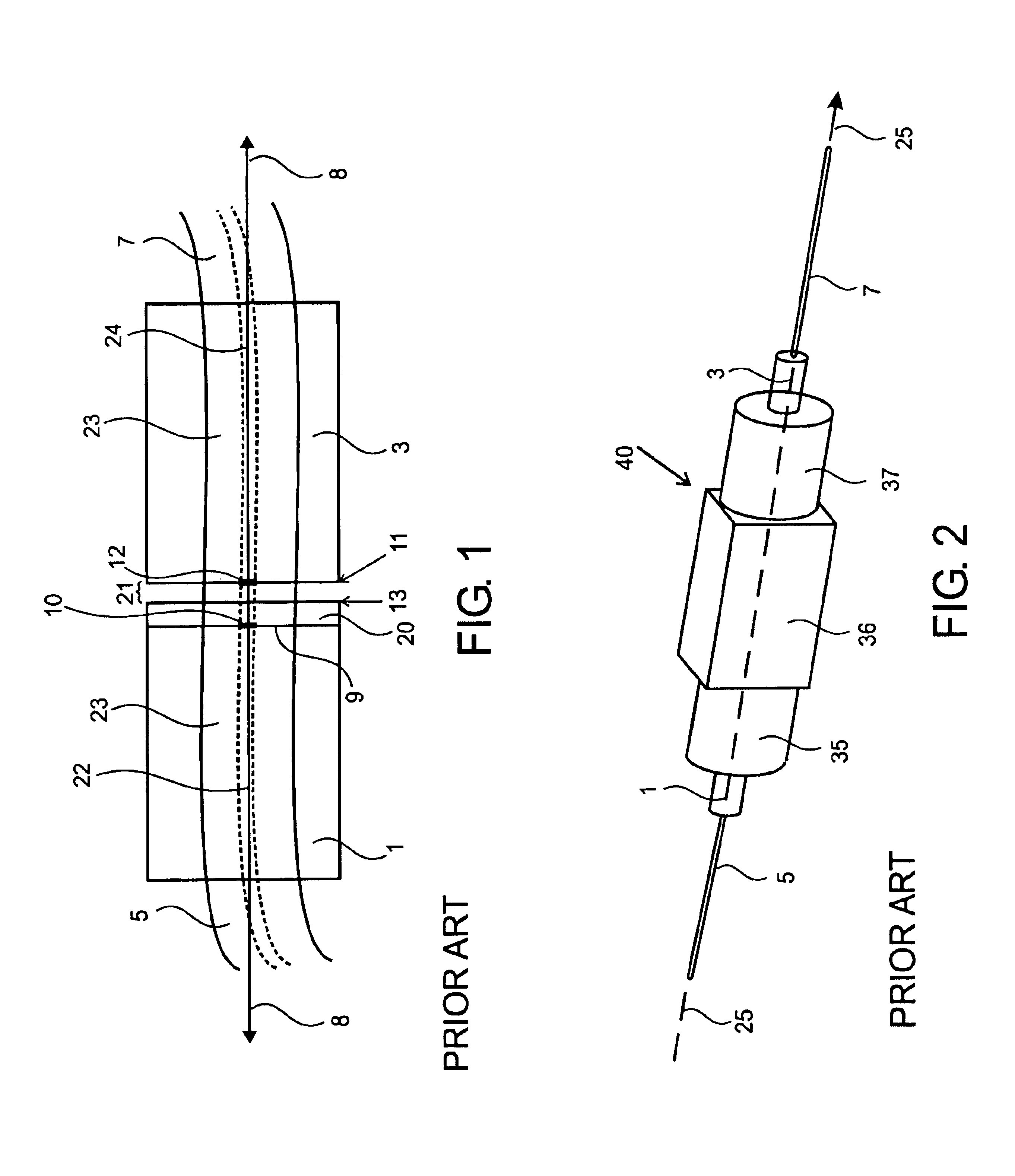Waferless fiber Fabry-Perot filters
a fabryperot filter and fiber technology, applied in the field of fabryperot, can solve the problems of reducing stability and optical performance, limiting the fsr that can be achieved, and prone to mechanical and thermal instabilities, so as to reduce alignment sensitivity and minimize light loss.
- Summary
- Abstract
- Description
- Claims
- Application Information
AI Technical Summary
Benefits of technology
Problems solved by technology
Method used
Image
Examples
Embodiment Construction
[0043]The terms free spectral range, bandwidth and finesse are used generally as they are used in the art. FIG. 3A illustrates the definitions of these terms in an exemplary spectrum. Those of ordinary skill in the art will appreciate that the definitions of these terms may depend on the shape of the peaks in the spectral output of the filter.
[0044]For descriptions herein an optical fiber has an internal end face and an external end. The internal end is the fiber end that is closest to the fiber gap within the FFP cavity. Thus, two internal fiber ends are aligned and spaced apart to form the gap within the FFP. A fiber contains a substantially axial longitudinal core surrounded by a cladding layer. Fiber Fabry-Perot filters of this invention are formed between mirrors at the internal ends of two fibers, between a mirror embedded between two fiber ends and one at an internal fiber end or between two embedded mirrors. Mirrors are typically formed at fiber ends by deposition of one or ...
PUM
 Login to View More
Login to View More Abstract
Description
Claims
Application Information
 Login to View More
Login to View More - R&D
- Intellectual Property
- Life Sciences
- Materials
- Tech Scout
- Unparalleled Data Quality
- Higher Quality Content
- 60% Fewer Hallucinations
Browse by: Latest US Patents, China's latest patents, Technical Efficacy Thesaurus, Application Domain, Technology Topic, Popular Technical Reports.
© 2025 PatSnap. All rights reserved.Legal|Privacy policy|Modern Slavery Act Transparency Statement|Sitemap|About US| Contact US: help@patsnap.com



